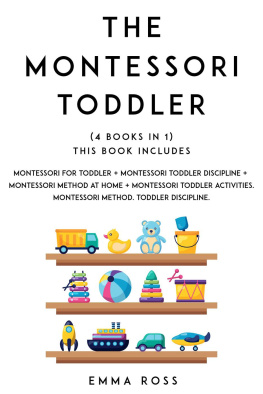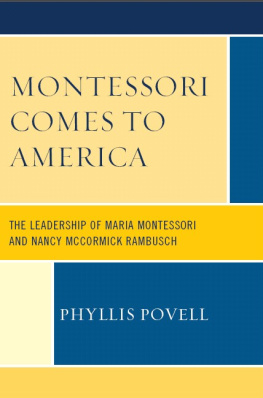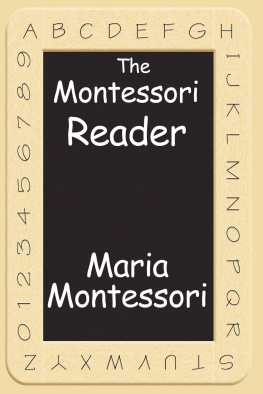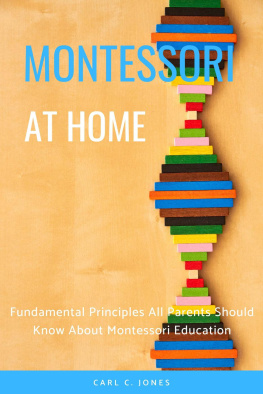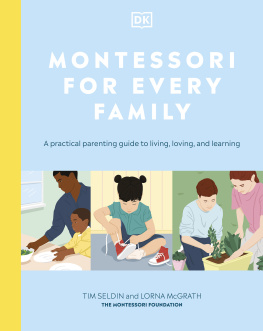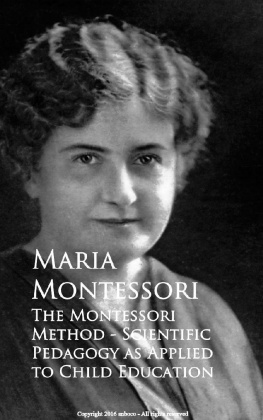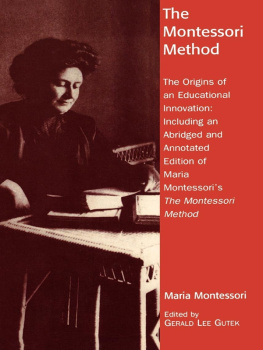M. Helfrich - Montessori Learning in the 21st Century: A Guide for Parents and Teachers
Here you can read online M. Helfrich - Montessori Learning in the 21st Century: A Guide for Parents and Teachers full text of the book (entire story) in english for free. Download pdf and epub, get meaning, cover and reviews about this ebook. year: 2011, publisher: NewSage Press, genre: Children. Description of the work, (preface) as well as reviews are available. Best literature library LitArk.com created for fans of good reading and offers a wide selection of genres:
Romance novel
Science fiction
Adventure
Detective
Science
History
Home and family
Prose
Art
Politics
Computer
Non-fiction
Religion
Business
Children
Humor
Choose a favorite category and find really read worthwhile books. Enjoy immersion in the world of imagination, feel the emotions of the characters or learn something new for yourself, make an fascinating discovery.

- Book:Montessori Learning in the 21st Century: A Guide for Parents and Teachers
- Author:
- Publisher:NewSage Press
- Genre:
- Year:2011
- Rating:3 / 5
- Favourites:Add to favourites
- Your mark:
Montessori Learning in the 21st Century: A Guide for Parents and Teachers: summary, description and annotation
We offer to read an annotation, description, summary or preface (depends on what the author of the book "Montessori Learning in the 21st Century: A Guide for Parents and Teachers" wrote himself). If you haven't found the necessary information about the book — write in the comments, we will try to find it.
This book fills a growing demand for contemporary books on Montessori education and how it applies to childhood learning and education in the 21st Century. Dr. Maria Montessori developed her theories and methods for educating young people more than a hundred years ago. Today, much of Dr. Montessoris empirical findings on how the childhood brain develops and works has now been proven accurate by recent neurological/ psychological studies on childhood learning.
M. Shannon Helfrich shares many experiences from her nearly 40 years as a Montessori teacher and teachers trainer to help parents and Montessori teachers understand the factors that influence understanding and learning for children throughout their years of development. In a lay persons terms, the author explains how the brain develops and why interaction with the environment is essential at specific points in a childs development. She includes diagrams and photographs throughout the book.
The author also links Montessoris findings with the latest neuropsychological research, weaving back and forth between the centuries, making a strong case for the ongoing viability of a Montessori education in this brave new world. Helfrich offers many anecdotes from classroom experiences with children that support these findings.
In the beginning of her book, Helfrich asserts that Dr. Montessori was one of the great thinkers in the 20th century who changed the understanding of a childs nature regardless of race, class or culture, and ultimately, an evolved understanding of our humanness. This book confirms Dr. Montessoris pivotal role in the history of childhood education internationally.
M. Helfrich: author's other books
Who wrote Montessori Learning in the 21st Century: A Guide for Parents and Teachers? Find out the surname, the name of the author of the book and a list of all author's works by series.

